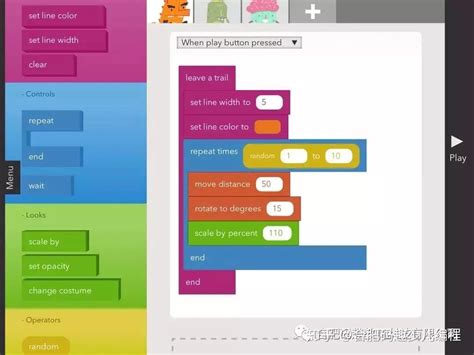Exploring the World of Children's English Programming
With the advancement of technology and the increasing importance of coding skills in today's world, the concept of children's English programming has gained significant traction. This interdisciplinary field combines elements of language learning with programming education, aiming to equip children with valuable skills in both areas from an early age.
Children's English programming essentially involves teaching coding concepts and principles to children using the English language as a medium of instruction. This approach serves a dual purpose:
Language Learning: It helps children improve their English language skills, including vocabulary, grammar, and fluency, by immersing them in an Englishspeaking coding environment.
Programming Education: It introduces children to the fundamentals of programming in a fun and interactive way, fostering computational thinking, problemsolving abilities, and creativity.Children's English programming typically incorporates various components and approaches to cater to different age groups and learning styles:
Visual Programming Languages: Using blockbased languages like Scratch or Blockly, which employ visual blocks that represent code elements, allows young children to grasp programming concepts without the need to learn syntax.
Interactive Games and Activities: Incorporating gamification elements into programming lessons keeps children engaged and motivated while learning. Interactive stories, puzzles, and challenges make the learning process enjoyable.
ProjectBased Learning: Encouraging children to work on projects that interest them, such as creating animations, games, or simple applications, fosters creativity and problemsolving skills.
Collaborative Learning: Group projects and pair programming activities promote teamwork and communication skills, allowing children to learn from each other and share ideas.Engaging children in English programming at a young age offers numerous benefits:
Enhanced Cognitive Skills: Learning to code improves critical thinking, logic, and analytical skills, which are valuable not only in programming but also in other academic subjects.
Improved English Proficiency: Immersing children in an Englishspeaking coding environment enhances their language skills naturally, making learning more effective and enjoyable.
Preparation for the Future: In today's digital age, proficiency in both English and programming is increasingly essential for success in various careers, making early exposure highly advantageous.
Encouragement of Creativity: Programming fosters creativity by empowering children to bring their ideas to life through coding, fostering innovation and problemsolving abilities.
Empowerment in Technology: Teaching children to code equips them with the skills needed to navigate and thrive in an increasingly technologydriven world.To maximize the effectiveness of children's English programming, educators and parents can follow these guidelines:

Start Early: Introduce coding concepts to children as early as possible, as young minds are highly receptive to learning new skills.
Keep it Fun: Use interactive and playful approaches to keep children engaged and motivated throughout the learning process.
Balance Challenge and Support: Offer activities that are challenging yet achievable, providing support and guidance as needed to ensure continuous progress.
Encourage Exploration: Allow children to explore and experiment with coding concepts freely, fostering curiosity and creativity.
Provide Feedback and Recognition: Offer constructive feedback and praise children's efforts and achievements, motivating them to continue learning and improving.
Stay Updated: Keep abreast of new developments and resources in children's English programming to adapt teaching methods and materials accordingly.Children's English programming offers a unique and effective approach to teaching both language and coding skills simultaneously. By integrating programming concepts into English learning activities, educators and parents can empower children to thrive in an increasingly digital and interconnected world, equipping them with essential skills for future success.












